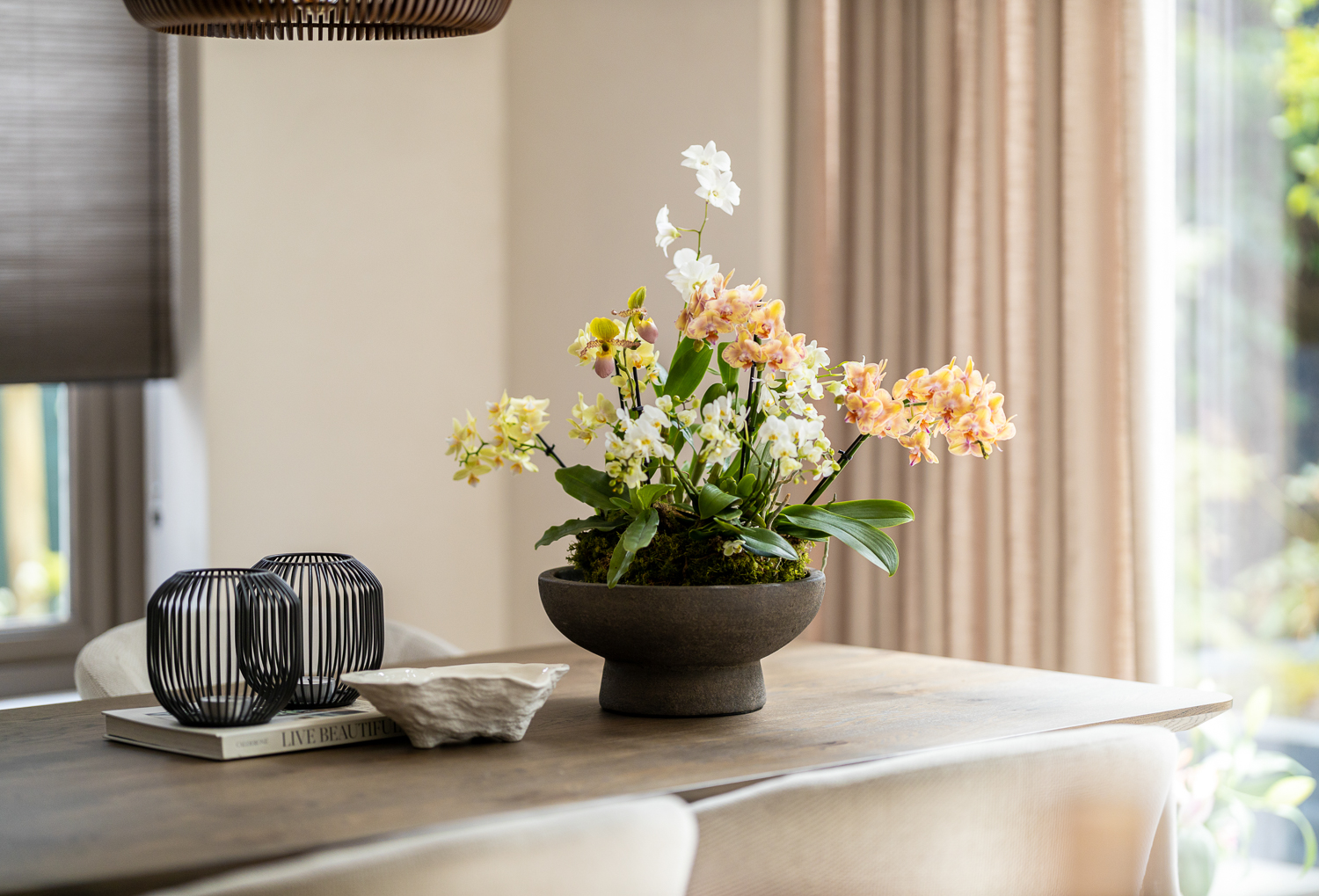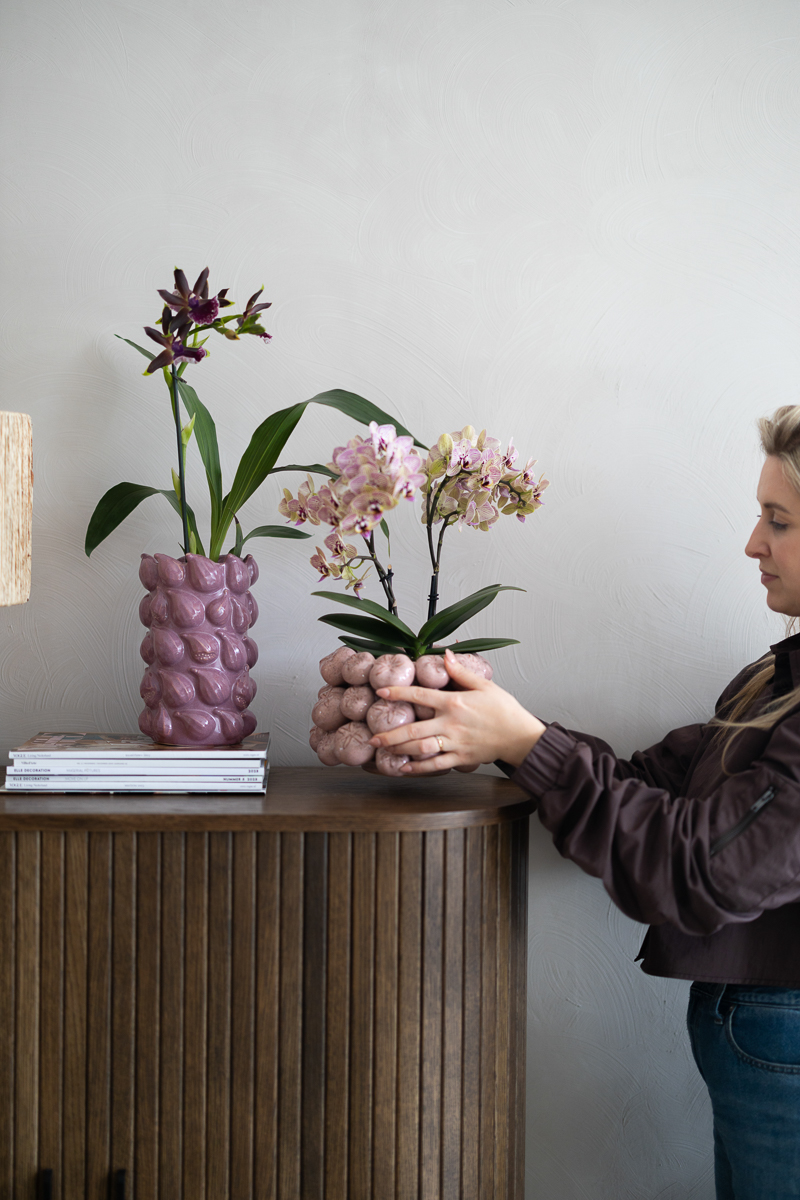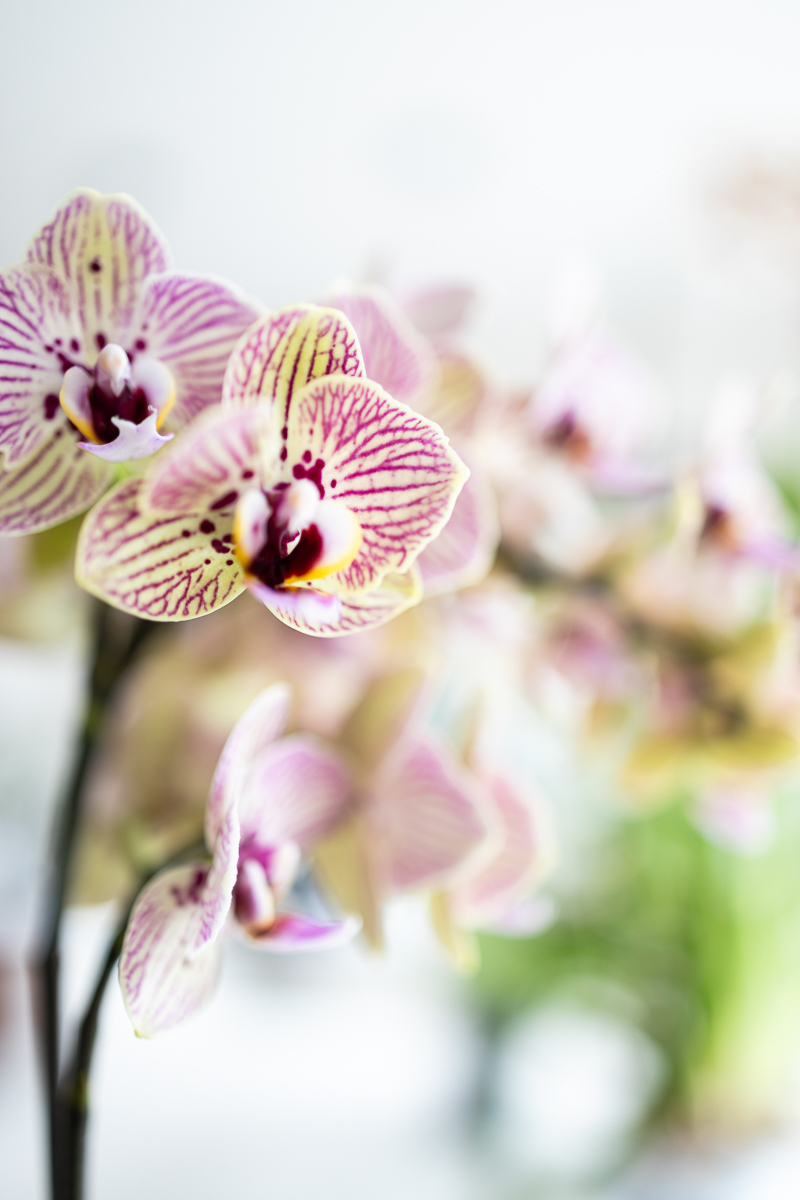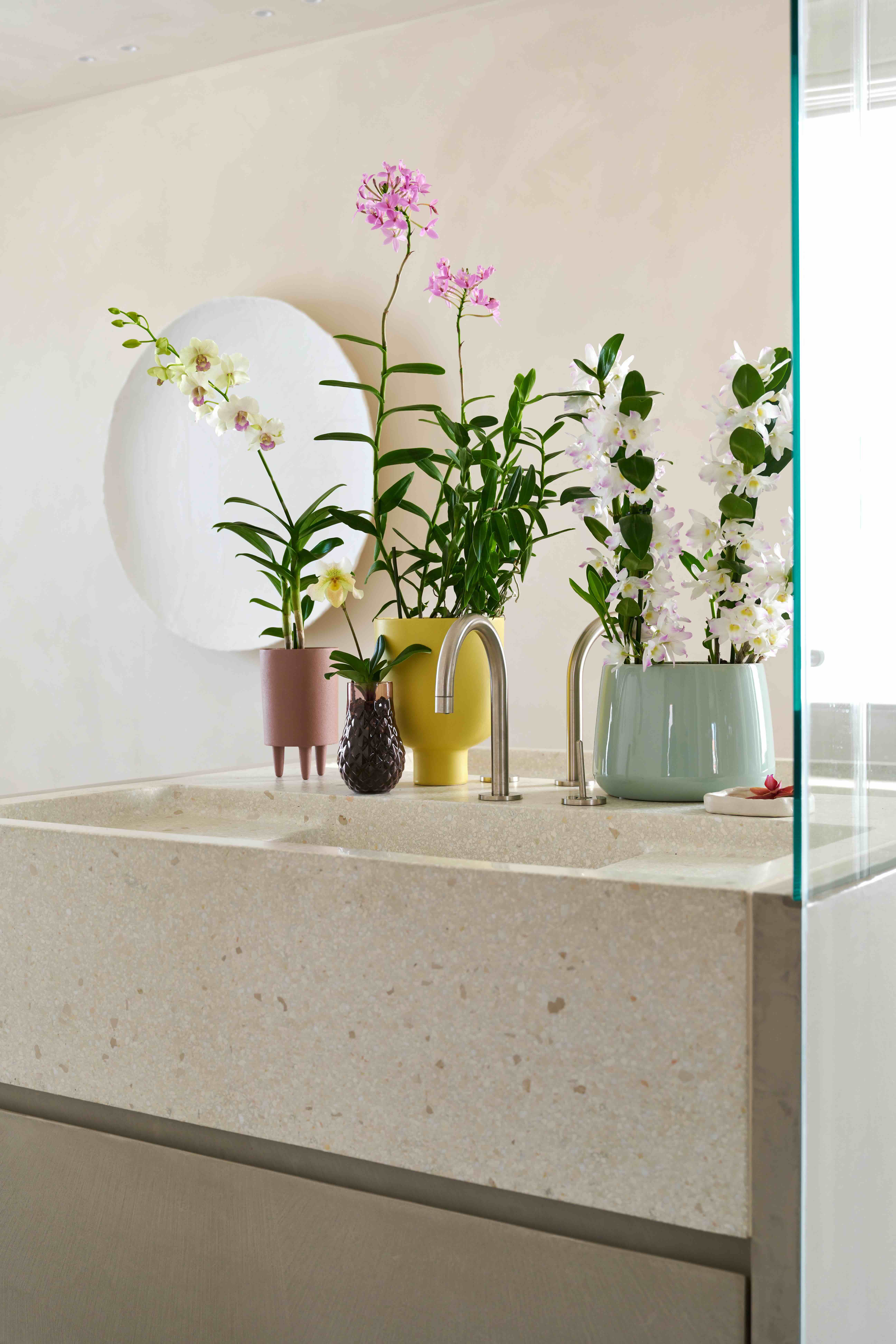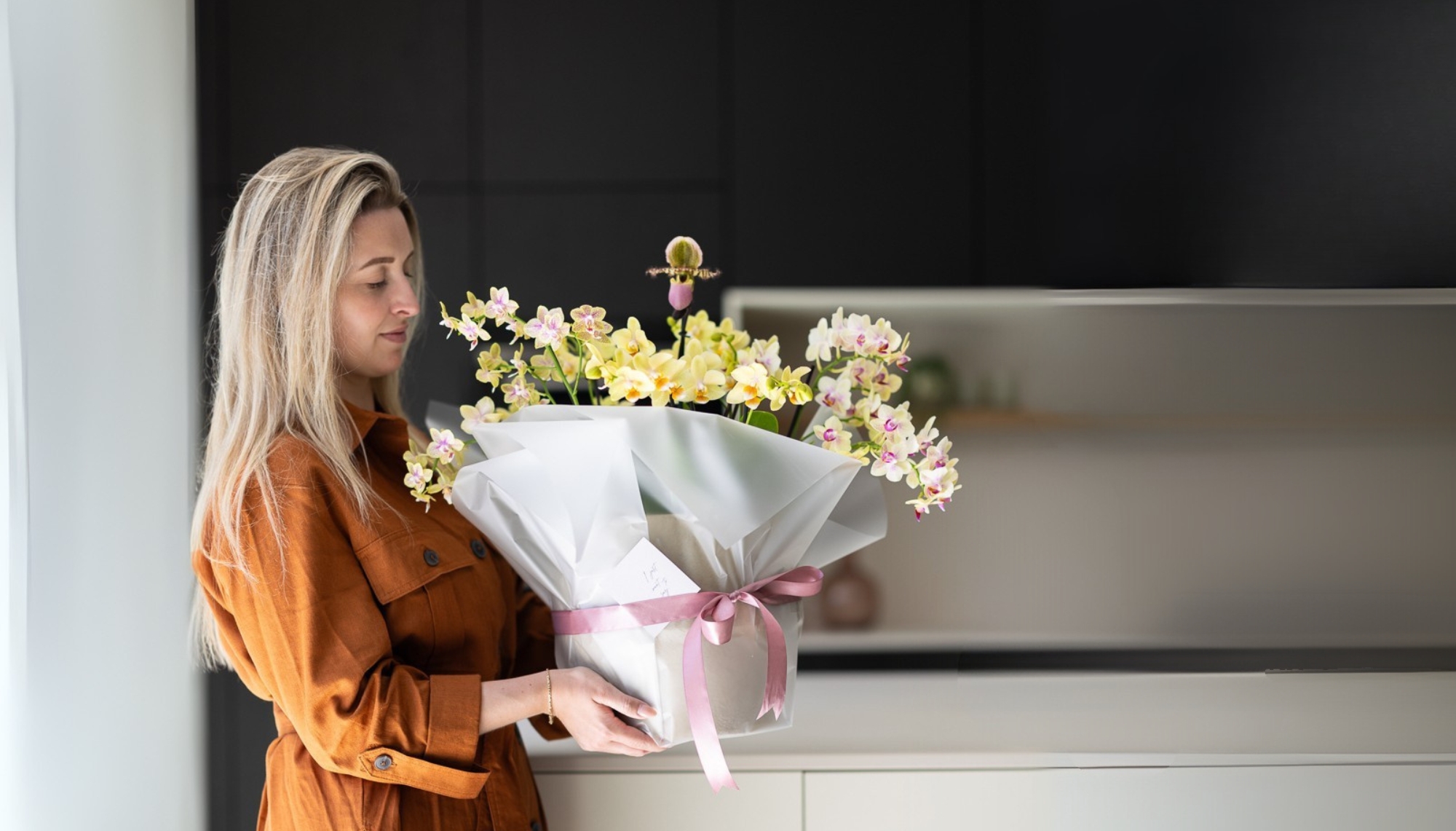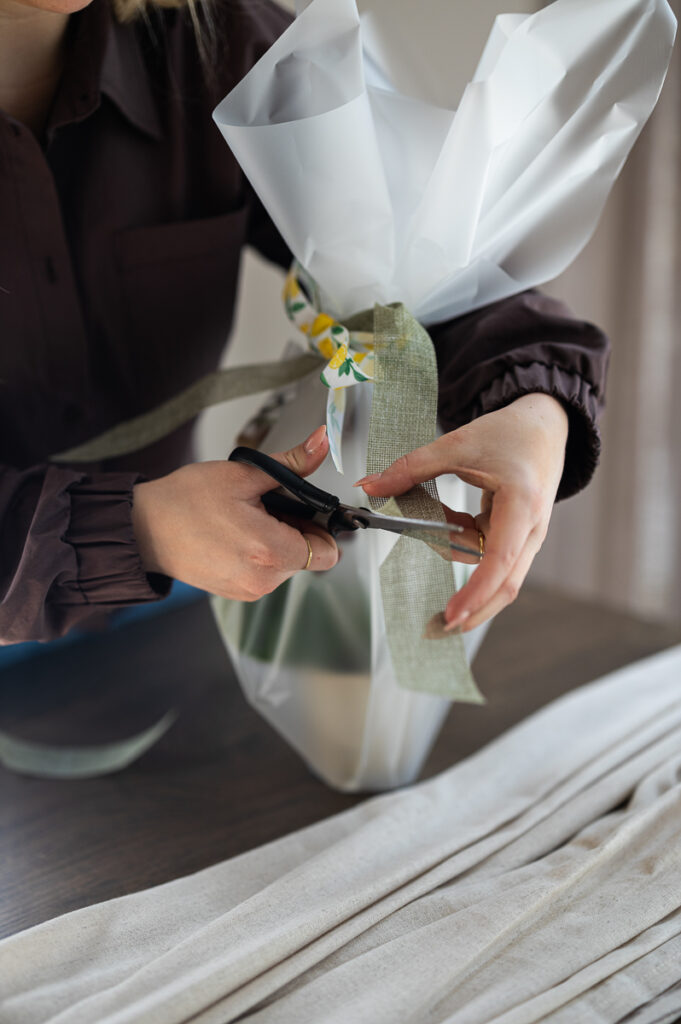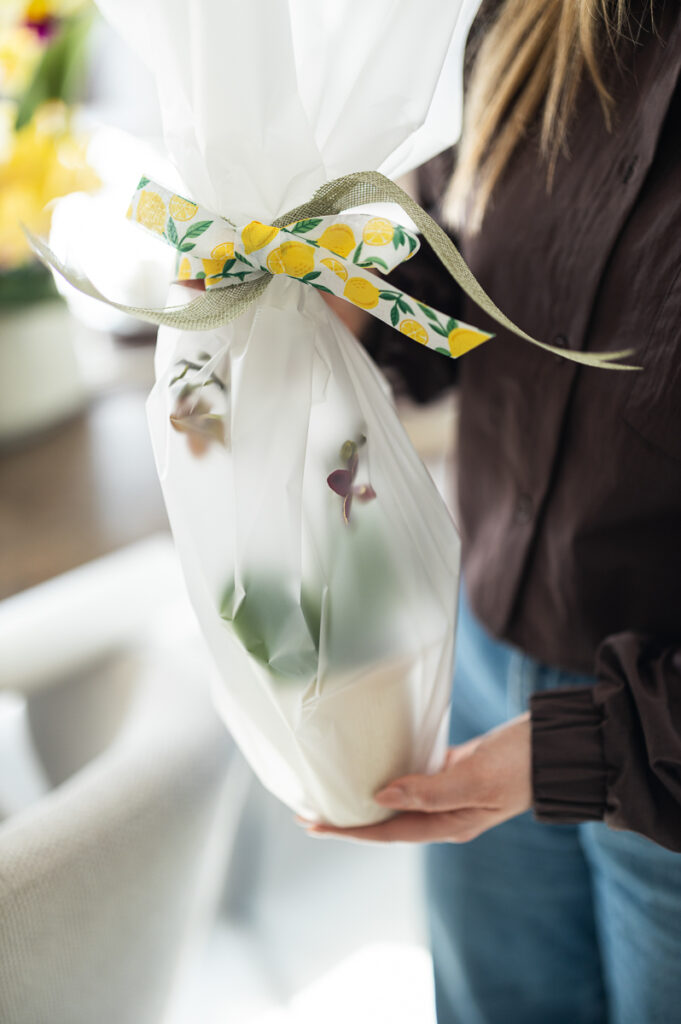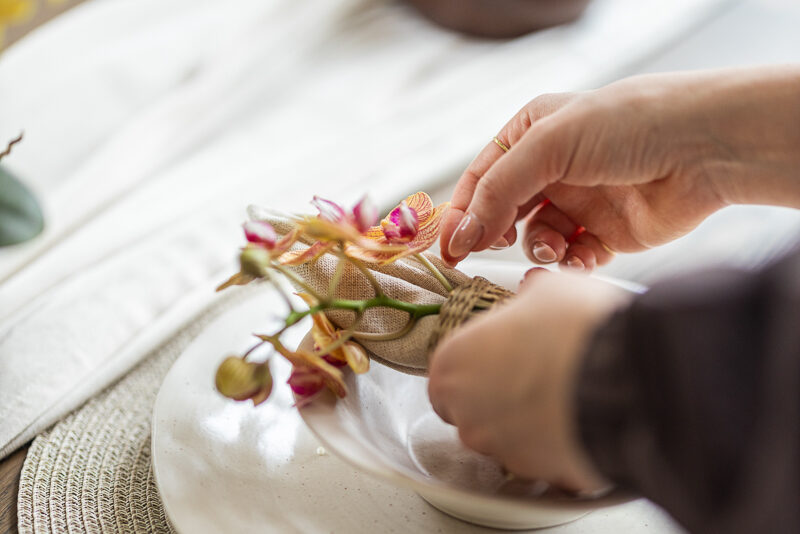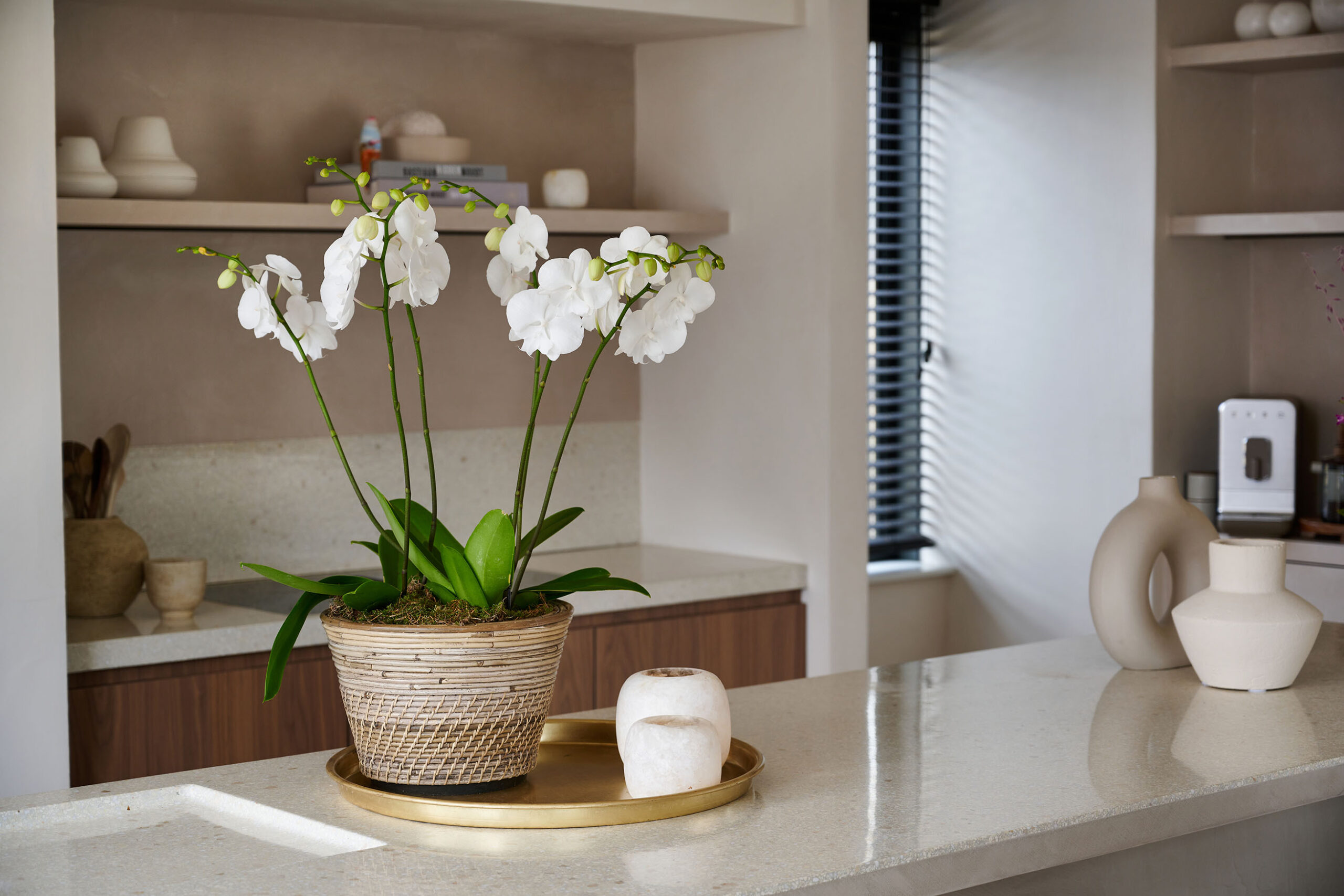Curious about this year’s trends? The Flower Council Holland has developed four style trends for 2023, together with Tuinbranche Nederland, iBulb, INretail and Bureau Nijman + Van Haaster. All four are based on the current zeitgeist, but are all different. Read on and get inspired by these style trends for 2023!
The style trends for 2023
Ode to Nature
Within Ode to Nature it seems as if nature invades and takes over our interior. The used materials are natural – such as rattan, clay, wood, natural stone -, recycled and/or environmentally conscious. The shapes are organic, robust and whimsical. For example, we see many rock, stone and boulder shapes or shapes that appear to be handmade. Used designs are natural structures, reliefs, whimsical stripes and gradient or overflow effects. In terms of colour, expect brown, green and soft, natural tones in the interior.

The flowers and plants within this trend are whimsical and natural in shape and are also used in that way. Outdoors, nature is given free rein too, with organic and whimsical shapes. Gardens take on a wild character, with winding semi-paved paths and wild borders. The use of many different plants and flowers stimulates biodiversity. Balconies are also vibrant green, with an abundance of plants, horizontally and vertically.

Vintage Folklore
Vintage Folklore is about diversity and the longevity of a product. Don’t just throw something away, but repair it with love. This leads to an interior with influences from the 1970s, from rural folklore, handicrafts, and fine floral designs, but also composite products, broken and broken shapes as if they were glued together.

The result is a personal interior with a warm, inviting appearance. Think of soft furniture with round shapes, coloured wall plates and patchwork. Bouquets are colourful and wild, with dried flower details. Plants are everywhere.

Within Vintage Folklore there are many materials with a nod to the 1970s. Jersey, bouclé, corduroy, textiles, crochet and knitting, veneer, tiles and ceramics are examples of this. The colours in this trend are cheerful and diverse, and don’t seem to match at first glance. Expect a colourful palette with natural and bright tones and pastels in addition to dark colours.

Outside we see a garden that arises more or less spontaneously through the use of elements that happen to be available. This ensures a creative garden or balcony full of beautiful recycled finds, in which everyone is welcome and everything is possible. You will find colourful garden furniture, patterned partitions and a cosy collection of plant pots.
Layered Spaces
Nowadays we are living smaller and smaller, while at the same time we want to combine more functions in our house. This creates a certain layering, with multifunctional furniture and room dividers. For example, rooms are conveniently transformed by small adjustments, so that, for example, a workspace is created. By playing with effects you get the feeling that there is more space than there actually is. We come across flowers and plants in unexpected places, such as in the toilet. Bouquets are arranged in layers and you also need to be able to easily ‘stack’ or move plants.

The contrast is reflected in the colour chart too. We recognize warm/cold, light/dark and bright/pastel. By using colours that come towards you or increasing the distance, you create the spatial effect that is central to this trend.

In the garden, we see spaciousness too. There are many different corners, and indoor and outdoor spaces seem to merge into one another. For example, a heavily planted interior space can feel like a garden, especially in office buildings. We use the existing space optimally with plants: think of plants on roof terraces, roofs, barns and verandas. Fences and hedges provide a bocage-like effect. Full borders make way for more transparent plants, in which colour contrast plays an important role. This also influences spatiality.
Collecting Memories
In a changing world, we like to surround ourselves at home with products that we recognise and that give a comforting feeling. Common materials used in this trend are ceramics, porcelain, traditional wickerwork, enamel, cane, zinc, cast iron and natural textiles, wood, cork and leather. The designs are calm and unobtrusive. They sometimes refer to nostalgic patterns such as weaving or braiding. The flower arrangements are delicate and poetic. In natural bouquets, each individual flower receives attention. Small delicate flowers and leaves with a fine structure are important elements. We also see irregularly shaped plants and plant pots, and older plants that have grown together with their environment. These give a unique look to this trend.

Colours play an important role too. Soft and dark greens offer comfort and security. Lilac and pink stand for softness, memories, and poetry. Flowers and plants complete this sense of comfort and memories.

We also find harmony and poetry in the garden. Elegant winding paths, transparent borders and intimate terraces invite you to relax for a while. Colourful garden furniture consists of nostalgic wickerwork, plants have delicate leaves and lovely flowers. We see a great diversity of flowers and plants in soft colours, for a melancholic appearance.
